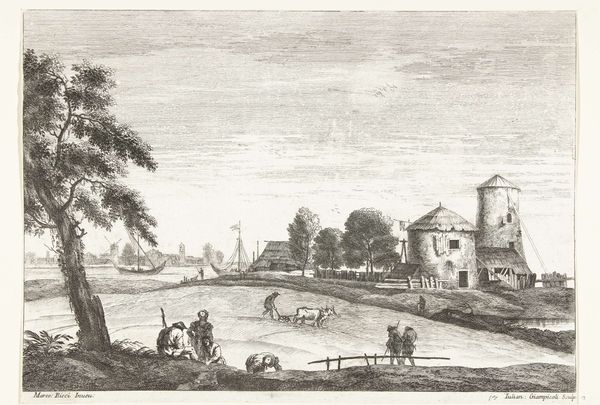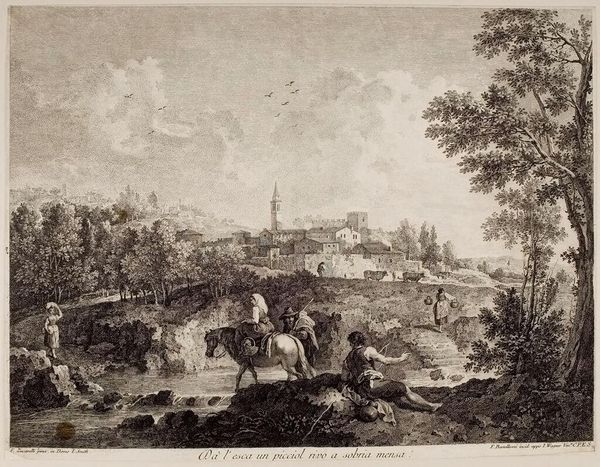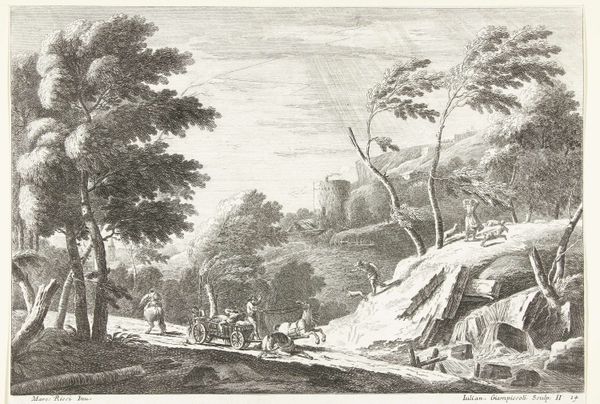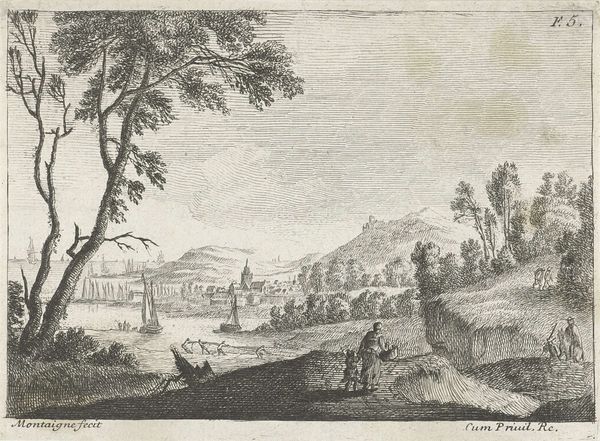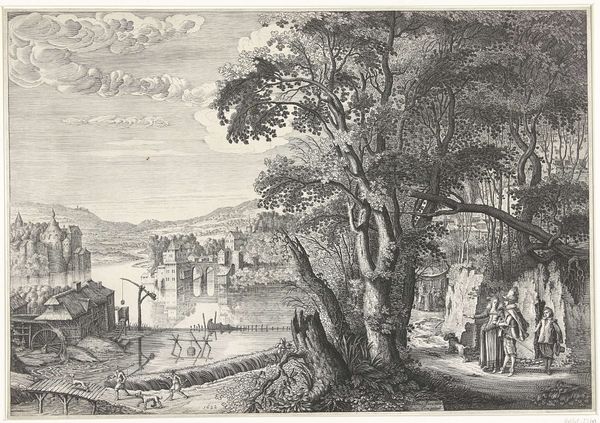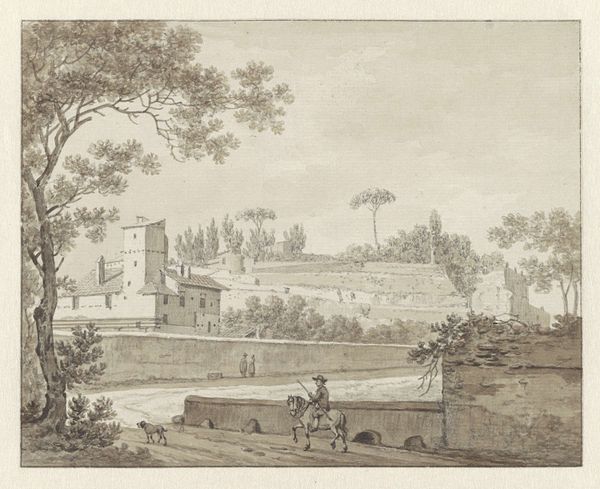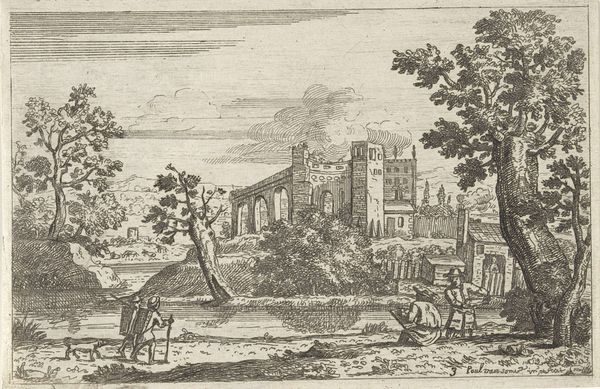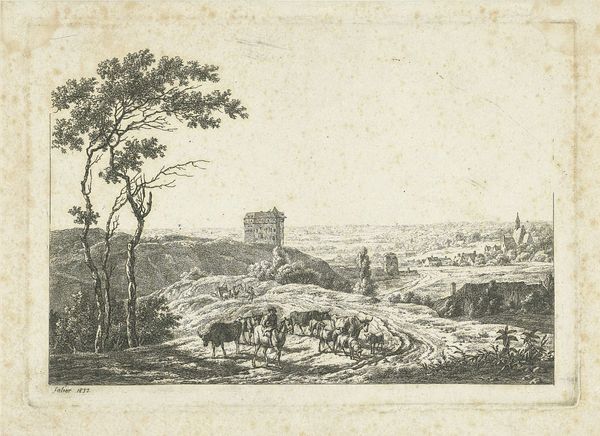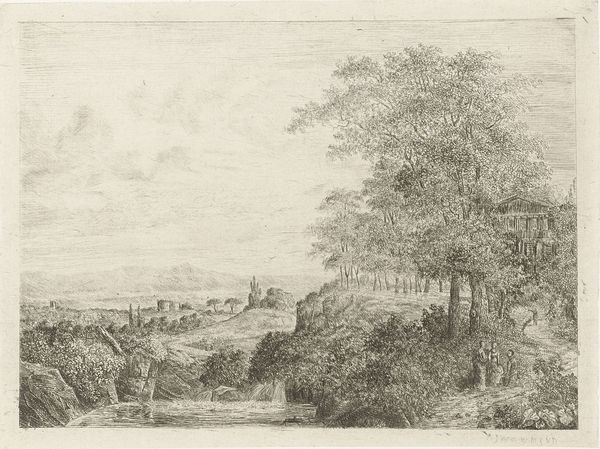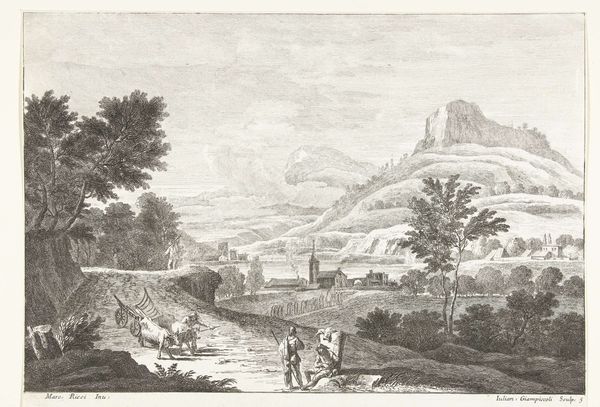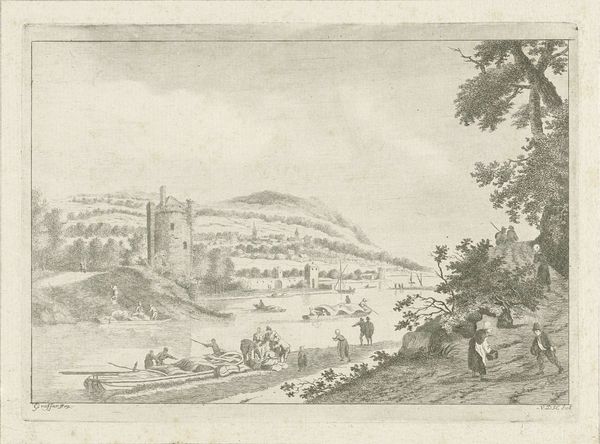
tempera, print, engraving
#
baroque
#
tempera
# print
#
landscape
#
line
#
cityscape
#
italian-renaissance
#
engraving
#
realism
Dimensions: height 247 mm, width 348 mm
Copyright: Rijks Museum: Open Domain
Curator: This print, dating from 1739-1740, is entitled "Heuvellandschap met stad en hengelaar", or "Hill Landscape with City and Angler" and it is by Giuliano Giampiccoli. Giampiccoli employed a tempera engraving technique to create this scene now held in the Rijksmuseum. Editor: It's instantly striking; the fine lines create an almost dreamlike rendering of the Italian countryside. The eye is drawn to the detailed cityscape perched upon the hill, but the foreground holds its own with the intimate scene of figures fishing and tending to cattle. There is such an idealized feeling here, but I wonder if it really mirrored society then? Curator: Indeed. Landscape prints like this were incredibly popular amongst the Venetian elite during the 18th century. They depicted not just scenery, but status. Owning such pieces demonstrated a certain level of cultural sophistication and perhaps also alluded to the patrons' connection to these lands, either real or aspired to. The prints become commodities of cultural capital. Editor: It’s compelling how he positions these scenes of pastoral leisure adjacent to what looks to be very fortified settlements. The fishermen at their quiet, reflective work by the stream contrast starkly with those thick, stone walls that protected the townsfolk. Fishing scenes like this often evoke notions of peacefulness and harmony with nature. It's almost allegorical here. Curator: Right, consider also the tradition of the pastoral landscape since the Renaissance. Giampiccoli is participating in this well-established dialogue on rural life as an ideal. This piece enters that long conversation. Editor: What I find particularly interesting are these rather subtle reminders of labor amidst an idyllic scene. The fishermen working to sustain their livelihoods and the cattle grazing remind us of the agricultural underpinnings supporting society. This keeps the imagery from being *too* detached. It's both idyllic and grounded. Curator: Precisely! These visual narratives serve as powerful mirrors, reflecting, shaping, and sometimes obscuring the complex relationship between the classes, land ownership, and civic pride within the Veneto region. Editor: Reflecting on the themes woven into this piece, I’m struck by how Giampiccoli captures a time capsule of values around landscape, leisure, and labor from nearly 300 years ago. Curator: And for me, this print exemplifies how even seemingly straightforward depictions of nature are often deeply embedded in socio-economic power structures and aesthetic trends.
Comments
No comments
Be the first to comment and join the conversation on the ultimate creative platform.
